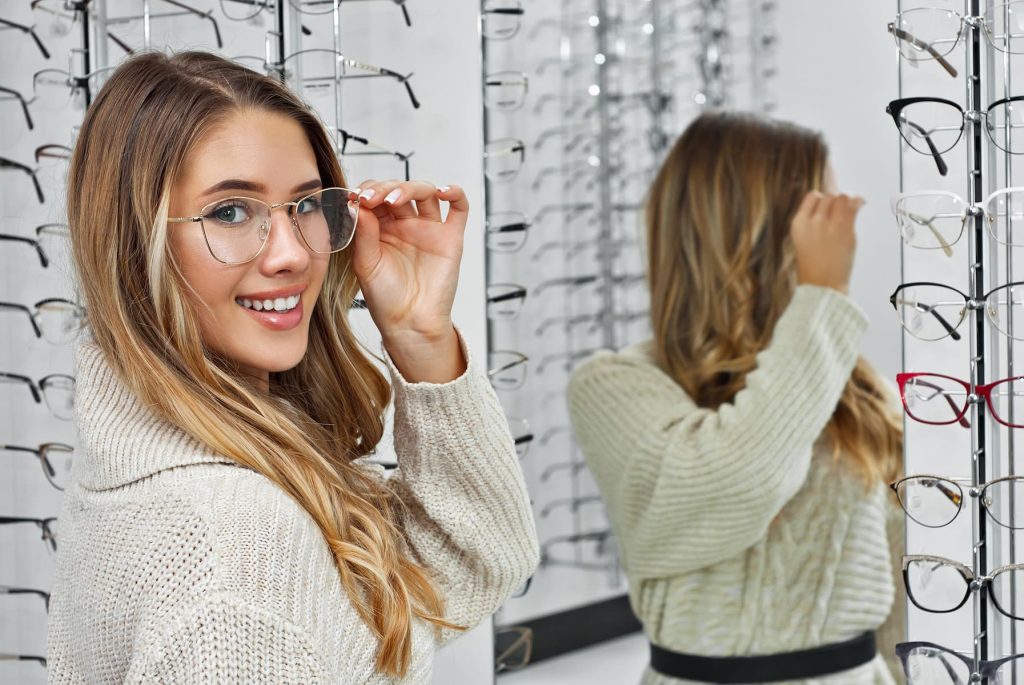Blog
The History of Eyewear: From Necessity to Fashion Statement
Eyewear has come a long way from its humble beginnings as a functional tool for vision correction to its modern-day status as a key fashion accessory. Whether it’s a pair of sleek sunglasses, stylish eyeglasses, or cutting-edge optical lenses, eyewear has transcended its utilitarian origins to become a statement of personality and sophistication. The journey of eyewear is as rich as the fashion world itself, blending technology, art, and personal expression. This article explores the fascinating history of eyewear, tracing its evolution from necessity to fashion statement.
The Origins of Eyewear: Practical Beginnings
Eyewear has been around for centuries, but its history is more than just about improving vision. The earliest records of corrective lenses date back to ancient times, around the 1st century AD. The first optical devices were simple magnifying glasses used by the Romans and ancient Greeks. However, it wasn’t until the 13th century that the concept of eyeglasses as we know them began to take shape.
The Invention of Eyeglasses
In the late 1200s, Italian inventor Salvino D’Armate is often credited with creating the first pair of eyeglasses. While historical evidence about the specific origins of eyeglasses remains unclear, it’s believed that the technology began in Italy. The first eyeglasses were made from convex lenses set into frames that rested on the nose. They were designed to help those with presbyopia (age-related farsightedness) see more clearly.
These early eyeglasses were far from stylish. They were functional but rudimentary, often made from simple materials like wood or bone, with small glass lenses. The glasses were not as widely used in the beginning, as the concept was still quite new. However, with time, their adoption began to grow, especially in intellectual circles where reading and study were critical.
Advancements in Lens Technology
As the centuries passed, advancements in lens technology improved the quality of eyewear. In the 15th century, the development of spectacles took a step forward with the introduction of concave lenses. These lenses were used to correct nearsightedness (myopia), marking an important breakthrough in vision correction. This advancement was crucial in broadening the scope of eyeglasses’ use, as it catered to people with both farsightedness and nearsightedness.
By the 18th century, lenses made from clearer glass became more common, and eyeglasses began to be produced in larger quantities. The frames also evolved, with some designs featuring metal temples to secure the glasses on the face. Yet, eyewear remained mostly practical and not yet a fashion statement.
The Rise of Eyewear as a Fashion Accessory
It wasn’t until the 20th century that eyewear began to evolve from a purely practical item to a fashionable accessory. Several factors contributed to this transformation, including the development of new materials, the rise of celebrity culture, and the increasing popularity of eyewear among famous figures.
The 1920s-1930s: The Birth of Stylish Frames
The 1920s and 1930s marked the emergence of eyeglasses as a part of personal style. This was an era where fashion was rapidly evolving, and people were beginning to seek more personalized accessories. Eyewear manufacturers, such as American Optical and Bausch & Lomb, started designing frames in a variety of styles, materials, and colors, catering to both function and fashion.
During this time, eyewear was also closely associated with the rise of iconic Hollywood stars. Actresses and actors like Greta Garbo and Clark Gable were seen wearing stylish glasses both on and off the screen, which helped to normalize the idea of wearing glasses as a fashion statement. Their public image helped to create the notion that glasses could be a chic accessory, rather than just a corrective tool.
The 1940s-1950s: The Evolution of Eyewear Design
By the 1940s and 1950s, eyewear became synonymous with sophistication and refinement. During this period, eyeglasses made from materials like acetate and metal were designed in bold, angular shapes. These frames were often oversized and eye-catching, making them a prominent part of one’s personal style.
One of the most famous eyewear designs during this time was the “cat-eye” frame, popularized by actresses like Audrey Hepburn. Cat-eye glasses became an iconic symbol of femininity and glamour, with their sharp, upward-curving edges giving wearers a distinctly fashionable look. Meanwhile, men’s eyewear embraced the bold, rectangular, and round frames made from acetate, with designers like Ray-Ban introducing the aviator style, which would go on to become a timeless classic.

The 1960s-1970s: Eyewear Goes Mainstream
The 1960s and 1970s saw eyewear evolve even further as it became a mainstream fashion item. In these decades, eyewear designers embraced vibrant colors, unusual shapes, and experimental materials. The rise of pop culture and the youth movement led to an explosion of innovative eyewear styles that reflected the spirit of the times.
John Lennon’s round glasses, for instance, became iconic in the 1960s and were immediately associated with countercultural movements and the peace movement. On the other hand, the 1970s saw the introduction of oversized sunglasses, which became a signature accessory for celebrities like Jackie Kennedy and Elizabeth Taylor. These bold eyewear styles symbolized luxury and exclusivity.
During this period, eyewear brands like Ray-Ban introduced innovative new designs, such as the Wayfarer sunglasses, which were made famous by stars like James Dean and later by Tom Cruise in Risky Business (1983). The Wayfarer style, with its thick black frames, became a staple in American pop culture, transcending the boundaries between utility and fashion.
The Modern Era: Eyewear as Fashion and Technology
By the 1980s and 1990s, eyewear had firmly established itself as a must-have fashion accessory. The growth of luxury eyewear brands like Chanel, Prada, and Gucci introduced a new era of high-fashion eyewear, where glasses were designed not just to correct vision but to make a statement. These designer glasses were often featured on the runways of major fashion houses, further cementing their status as high-end fashion pieces.
Technological Innovations in Eyewear
In addition to design, eyewear also benefited from significant technological advancements in lens materials and coatings. The introduction of lightweight materials like titanium and polycarbonate revolutionized eyewear design by making glasses more durable and comfortable to wear.
In recent years, technology has also impacted the functionality of eyewear. Smart glasses, such as Google Glass, have introduced the concept of wearable technology, blending vision correction with features like augmented reality (AR), voice recognition, and even photography. Though smart eyewear has not yet become a mainstream fashion item, its potential is undeniable, and it represents the next phase in the evolution of eyewear.
Eyewear as a Personal Expression: The Current Fashion Scene
Today, eyewear is considered one of the most personal fashion accessories. With an incredible variety of styles, shapes, colors, and materials available, consumers have more options than ever before to express their individuality through their eyewear choices.
Brands like Warby Parker and Oliver Peoples have democratized fashion eyewear, offering trendy and affordable glasses in a variety of styles. Additionally, eyewear trends often mirror the larger fashion trends of the time, from oversized frames to minimalist designs.
Celebrities continue to influence eyewear trends, with stars like Beyoncé, Rihanna, and Harry Styles often sporting distinctive glasses that capture attention and set trends. Influencers and fashion icons showcase eyewear as a way to express personal style, adding a unique dimension to their overall outfits.
Sunglasses, in particular, remain an enduring fashion staple. From classic aviators and wayfarers to bold, oversized frames and futuristic geometric designs, sunglasses not only protect the eyes from the sun but also serve as an essential part of personal style. The rise of eco-friendly and sustainable eyewear options has also become a key part of the modern fashion landscape, with brands offering glasses made from recycled materials or biodegradable acetate.

Conclusion
The history of eyewear is a fascinating journey that reflects changing needs, evolving technologies, and shifting cultural attitudes. From its beginnings as a practical tool for vision correction to its rise as a fashion accessory, eyewear has continuously adapted to meet both the functional and aesthetic desires of society. Today, eyewear is more than just a necessity—it’s a statement of style, identity, and individuality. Whether you’re sporting a pair of sleek designer glasses or retro-inspired frames, eyewear remains a powerful symbol of personal expression, with its rich history paving the way for the future of fashion and technology.
This article provides a comprehensive look at the evolution of eyewear while being SEO-optimized with relevant keywords like “history of eyewear,” “fashion eyewear,” “eyewear trends,” and “eyeglasses evolution.”


